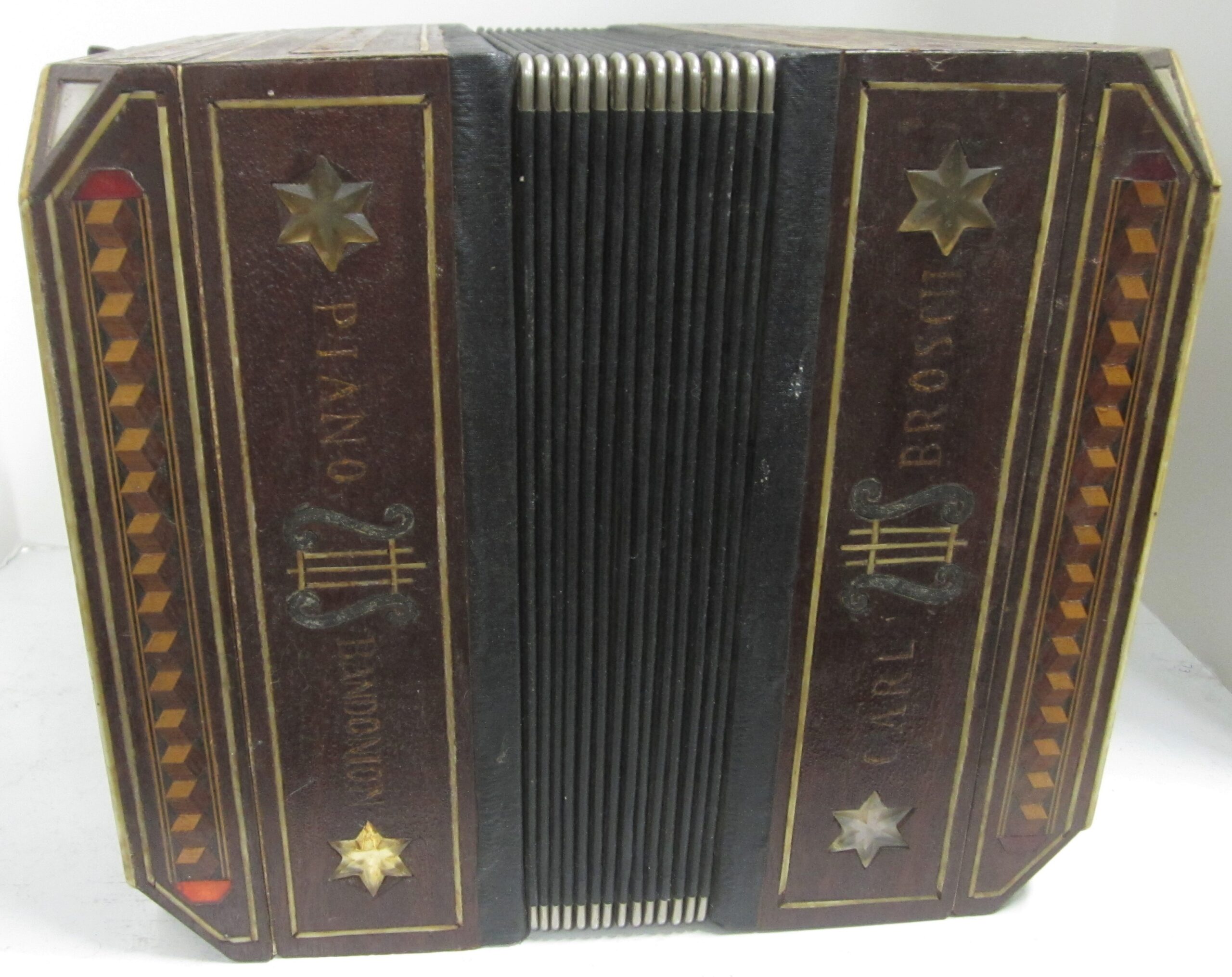
Even as events start to slowly materialize again in our region, we are still missing the live musical aspects of many. The Sooke region has been home to many with musical abilities, and this is evident through physical objects in our collection once belonging to local talents.
A wood violin (2004.011.001a-l) in our collection appears to have been made for teaching as a paper guide is adhered to the neck with fingering positions for notes. The bow is painted black with blonde bow hair and the stick and tip are made of a dark red wood. The frog is the piece at the base of the bow that holds and adjusts the hair. Pieces of mother of pearl are inlaid on the base and sides of the frog. On the side of the bow, stamped into the wood just above the frog is “CZECHOSLOVAKIA”. The violin has a wooden case, painted black, with red felt lining and brass locks and handle. A series of pegs and bridges come with the violin, along with sandpaper and pieces of rosin, and empty envelopes for replacement violin strings.
Donated in 2012, a large wood and metal Ludwig drum (2012.020.001) was once used by a drummer in the Sooke Girls Drum and Drill Corps. The head of the drum is white with blue lettering that spells out the group’s name. The shell of the drum is brown with a gold hoop edge.
One of my favourite recent donations is a custom made Piano Bandonion accordion (2020.039.001), which belonged to champion logger Richard “Dick” Herrling (whose sons were the world famous “Birling Herrlings”). The bellows of the accordion expand when the player pulls the handles on either side of the accordion. The air coming from the bellows is routed to particular reeds, controlled by pressing the instrument’s buttons. The treble and bass sections are made of a reddish wood. On the side of these sections the words “Carl Brosch” and “Piano Bandonion” are among translucent Bakelite stars and music stand designs. The “treble” side has two rows of black flat and sharp keys and ivory-coloured natural keys. The opposing side has clear cylindrical “bass” buttons and a Bakelite bar above them with a black leather strap handle attached to it. On the sides, around the handles, are the “grilles”, which have elaborate floral and geometric designs carved into the wood, partially showing a mesh material underneath, where the sound is released. The accordion is still functional and some surprised “oos” were made by collections staff when the instrument let out a musical sigh while being turned over.


